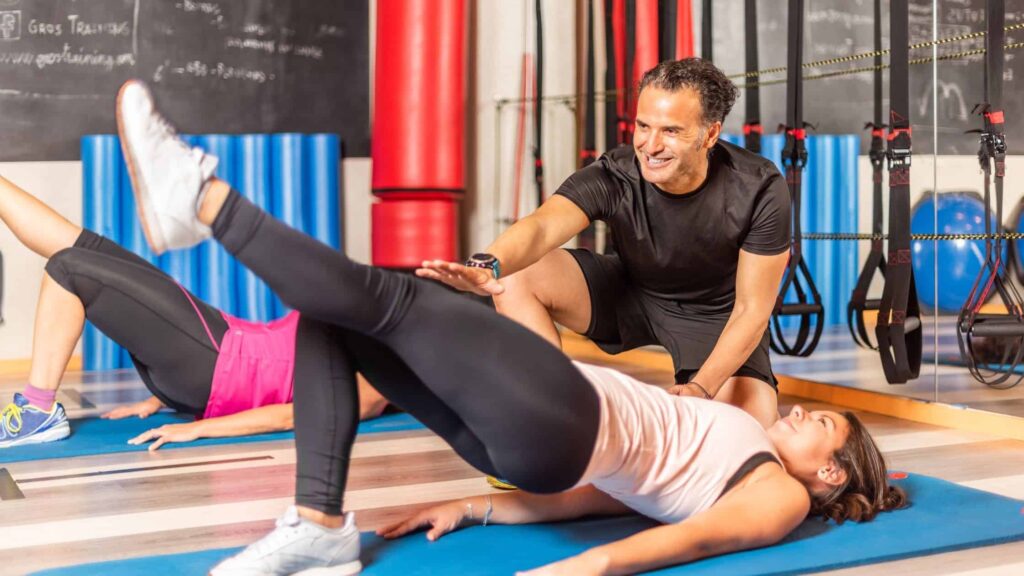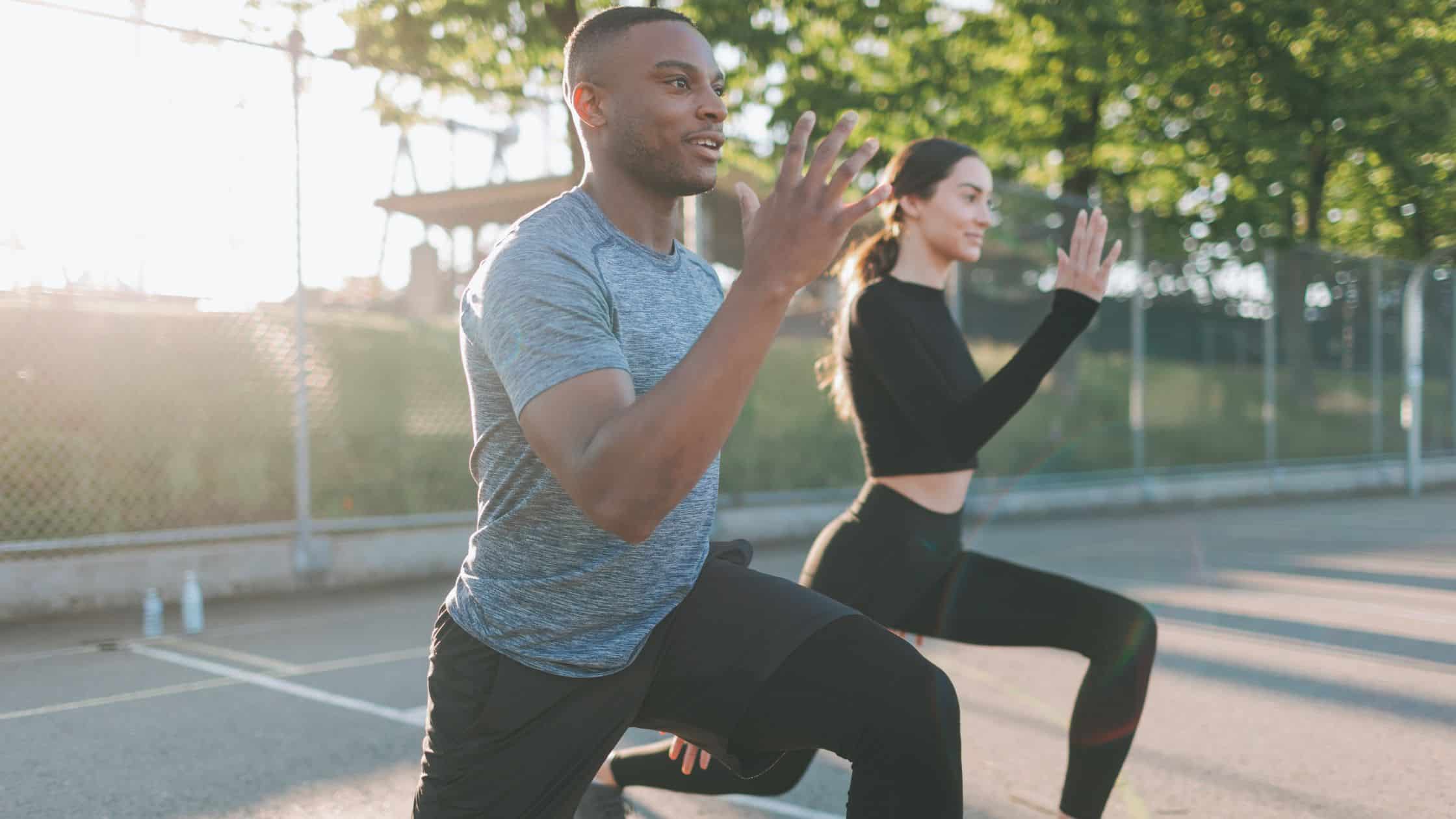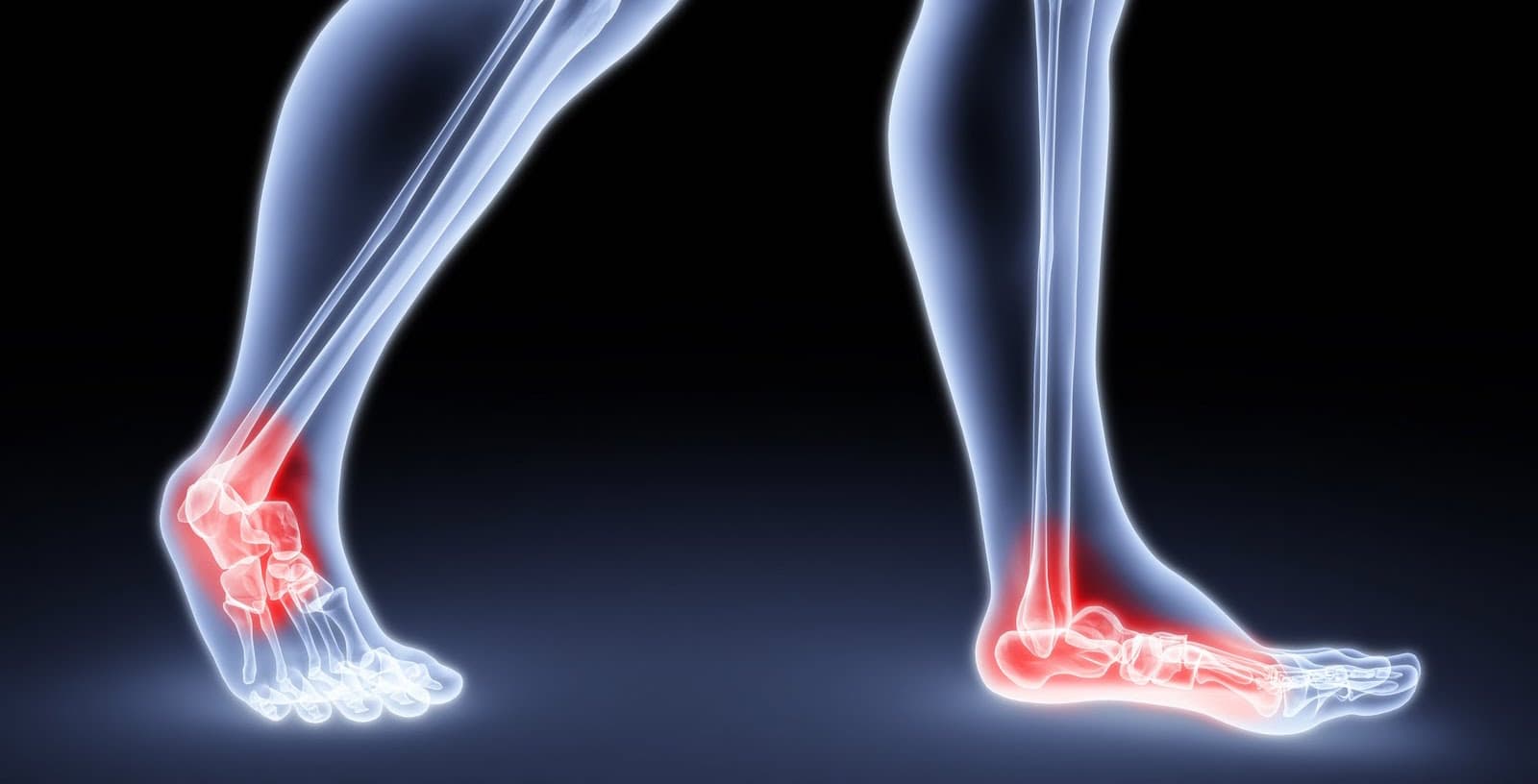Pelvic Floor Muscle Training For Athletes
Training to compete at an elite level can be challenging and taxing on your body. Athletes who train often and at high intensity frequently experience muscle strains, joint sprains, and other injuries due to their training and competition. However, athletes are also commonly experiencing issues related to their pelvic floor.
Elite athletes who play contact sports may experience traumatic pelvic injuries from repeated blows to the area. Recovering from these kinds of injuries requires more than just resting for a few days or weeks. To return to peak performance, you need specialized pelvic floor physiotherapy designed for athletes, emphasizing pelvic floor muscle training with functional movement training, strength and endurance training, and core stabilization exercises.
In this article, we explore pelvic health physiotherapy, why athletes should get pelvic floor training, and how pelvic muscle training can help improve athletic performance.
Pelvic floor strength in the athletic population
Pelvic floor strengthening is a common issue for male and female athletes. Low-tone pelvic floor muscles can lead to stress urinary incontinence, fecal incontinence and pelvic organ prolapse. High-tone pelvic floor muscles cause reduced ability to evacuate stool or urine, pelvic pain and sexual dysfunction affecting both men and women.
Pelvic floor muscles (PFM) are often neglected during training, and they should be considered an important part of the core muscle group during training. A lack of PFM strength or length can be caused by a lack of appropriate practice, poor breathing techniques, and improper use of the core muscles during exercise.
Athletes, especially those who perform explosive movements, are at risk of developing pelvic floor dysfunction. These risks increase further when an athlete continues to train while experiencing symptoms of pelvic floor dysfunction. Unlike other sports-related injuries that can heal, pelvic floor dysfunction will worsen if left untreated. Stronger and conditioned pelvic floor muscles are proven to improve athletic performance and increase strength and endurance.
Understanding why you need pelvic muscle training and how it can improve your PFM strength for performance as an athlete is crucial for making informed decisions about your care.

Common pelvic floor conditions in athletes
The most common sports-related pelvic floor conditions include pelvic pain, stress urinary incontinence, fecal incontinence and pelvic organ prolapse.
Pelvic pain is the most common health complaint in athletes caused by playing sports with increased muscle strains and pulls from poor lifting technique, improper footwear, muscle imbalance, and repetitive forces. Pelvic pain can result in a feeling of pressure or pain in the lower abdomen and can manifest in different ways, such as discomfort or sharp abdominal pain. The pain may also be felt in the bladder, anus, groin, hips or buttocks.
Stress urinary incontinence is when the muscles in the floor of the pelvis are too weak to keep urine from leaking out when you’re exercising, lifting heavy weights or running. Athletes are more prone to suffer from urinary incontinence because of the high-intensity and repetitive movements in their sport. The pelvic muscles may also be weakened by the pressure on them during exercise.
Fecal incontinence: It is a condition that affects the muscles of the lower gastrointestinal tract and is a type of involuntary defecation. Fecal incontinence is a common issue among athletes, particularly those participating in contact sports. The most common cause of fecal incontinence is an abnormal contraction of the muscles around the anus. Injury or trauma to the anus may result in an inability to control bowel movements. The more physical activity an athlete engages in, the more likely they will develop fecal incontinence from muscle imbalance.
Prolapse of the pelvic organs occurs when the pelvic organs drop into the opening of the pelvis due to weakening of the PFM and a rise in intra-abdominal pressure causing prolapse, which in turn causes discomfort and/or pain in the pelvis or lower abdomen. This is caused by poor lifting techniques and inappropriate muscle training, causing excessive load into the pelvic muscles.
Risk factors for pelvic floor muscle dysfunction in athletes
Athletes who engage in high-impact sports are at an increased risk of pelvic issues due to muscle imbalances and varying impact and forces that accompany muscles and joints between the abdomen and pelvis.
High-performance athletes are highly likely to develop pelvic issues due to frequent and intense training like running and jumping. Trauma to the pelvic girdle can occur from frequent blows to the lower abdomen and pelvis from contact sports like hockey, rugby, and soccer and can also occur over time from excessive training and poor posture.
Previous history of pelvic floor injury during childbirth and having diastasis rectus ( abdominal separation ) is also a risk factor for developing pelvic floor dysfunction during sports training.
If you’re interested in learning more about the specialized form of physical therapy training and how it can help you as an athlete, keep reading!

Pelvic floor physiotherapy for athletes
The pelvic floor muscles are used in everyday tasks and play a major role in supporting the lower back and the abdominal muscles. It provides support to the bladder and other organs and helps to control urine flow and reduce prolapse during any intense tasks.
The PFM’s are often overlooked in performance during athletic activity and training. During high-impact activities like running, muscle contractions in the pelvic floor and core are required for a longer duration of time. So good flexibility in the muscles and strength are key to preventing pelvic pain and reducing any pelvic dysfunction.
Pelvic floor physiotherapy is a specialized area in physiotherapy that focuses on the pelvic floor muscles. Pelvic floor physical therapy has become more popular lately as the frequency of pelvic floor dysfunction increases with repetitive strain and trauma that comes with sports and better awareness.
Pelvic floor muscle training in athletes for improved strength and performance
Exercising the PFM can generally help improve overall bladder and bowel control, reduce urine leakage and constipation, and help with sexual function.
Pelvic floor muscle training (PFMT) is a type of exercise that can help you maintain your pelvic floor’s optimal function. PFMT helps improve your muscle strength and performance during athletic activity by improving core stability, and endurance while preventing any incontinence episodes and pelvic pain.
Pelvic floor muscle training focuses on improving coordination and control of the muscles in the pelvic girdle and improving the stability of the pelvis during an activity.
A well-trained PFM can support both the abdominal and lower back muscles, which in turn can help improve performance during athletic activity.
Athletes should incorporate PFM strengthening into their training regimens to enable them to perform at their best. The primary goal of PFMT is to help male and female athletes regain control of their PFM, improve physical activity and improve their quality of life.
Advantages of pelvic floor physiotherapy treatment for athletes
The pelvic floor muscles are often weakened during sports, whether it is a low-impact, prolonged intense activity like cycling, swimming, or running or moderate to high-intensity activities like cross-country skiing, tennis, gymnastics, aerobics, jump sports, soccer, basketball, etc.
A research study has shown that after observing athletes and non-athletes, some pelvic physical changes can increase the risk of urinary incontinence in athletes. Differences include a larger mean diameter of the puborectalis muscle, a greater descent of the bladder neck and a larger urogenital hiatus area during the Valsalva maneuver in athletes compared to non-athletes (Kruger J.A et al. 2007 ). This increases the risk of pelvic dysfunction.
High-performance athletes can benefit from pelvic floor physiotherapy for a variety of reasons. Not only does it help treat pelvic floor problems and reduce pain, but it can also prevent other injuries from occurring and improve your athletic physical performance.
Key benefits can include
Reduce Pelvic floor dysfunction in athletes – Pelvic floor physiotherapy for athletes can be a helpful tool to correct the underlying problem related to pelvic floor disorder or prevent any PFM problems from occurring during any high-intensity activity. PFMT involves exercises and techniques to help the athlete appropriately strengthen and support the core muscles during exercise and intense training.
Prevent future pelvic injuries – Pelvic health concerns are especially common in athletes and are often caused by repetitive actions or heavy impacts to the lower abdomen. Appropriate professional pelvic floor exercise and training can help treat these injuries before they become chronic conditions and can reduce the risk of future injuries.
Eliminate pelvic pain – Athletes with pelvic girdle injuries often experience pain in the lower abdomen, pelvis, and legs. Pelvic floor physiotherapy can help reduce these symptoms and improve daily activities, allowing you to return to peak performance and avoid long-term disability.
Improve overall muscle performance – Pelvic floor issues are often caused by poor posture, improper lifting techniques, and/or muscle imbalances, which can negatively affect your athletic performance. PFMT can help to correct these muscle imbalances, allowing you to return to pre-injury performance levels.
How can pelvic floor physiotherapists help athletes?
During the pelvic floor physical therapy session, the pelvic health physiotherapist will assess your pelvic floor muscle and the surrounding joints and connective tissues, including the ligaments and muscles in the pelvic girdle, abdominal and lower back. They will also look at your posture and how your muscles function together during the task to determine the cause of muscle dysfunction. They may also perform an internal or external exam of your pelvic floor, depending on the condition to further assist with your treatment regime.
Once the physiotherapist has determined the cause of the injury, they will create a treatment plan appropriate to your needs and sport. They may prescribe a combination of manual therapy, biofeedback, muscle stimulations, posture correction, strength training, and/or exercises to help improve your muscle performance and reduce any pain or dysfunction.
Key exercises program for athletes
During rehabilitation after a pelvic floor dysfunction, exercises are usually determined based on the condition. Some examples of exercises that can help strengthen the pelvic floor include Kegel exercises, deep squats, lunges, bridging and activity-specific retraining exercises.
Kegel exercises – Kegel exercises are often prescribed as part of a pelvic floor rehabilitation program and can be done anywhere, anytime. These exercises strengthen the PFM, which can be weakened by injury or over time.
Pelvic floor muscle activation – This process involves increasing the awareness of your pelvic floor and engaging these muscles during your daily activities and sports.
Stretching – Posture correction exercises, like stretching, can help to realign your muscles and correct any postural issues that may have caused your pelvic muscle issues.
Core strengthening and stabilization training – A strong core will help you to maintain good posture and reduce the strain on your PFM. Core strengthening and stability exercises can be modified to suit your fitness level.
Breathing exercises – With a decreased level of strength or improper breathing, the pelvic floor muscles can weaken, leading to problems in other body areas. A good way to strengthen pelvic floor muscles is by practicing deep breathing exercises. Slow, deep breaths will encourage the diaphragm to contract, which in turn will help lift your pelvic floor muscles and tighten them to reduce muscle dysfunction and improve performance.
Sports specific activity muscle training PFMT is a relatively uncommon training in sports. Unlike yoga or Pilates, this type of training is uniquely sport-specific and can be tailored to any athletic activity to improve your muscle function.
When to see a pelvic floor physiotherapist?
Pelvic injuries can be debilitating and affect your daily activities, athletic performance, and quality of life. Athletes who experience pelvic floor injuries are at an increased risk of long-term effects, such as incontinence, prolapse and pelvic pain, if they don’t seek treatment.
Athletes who experience pelvic injuries or any symptoms are advised to see a pelvic health physiotherapist as soon as they experience any problems. Pelvic physio can help design a treatment and pelvic floor muscle exercise plan to treat the injury and associated issues. Pelvic health physiotherapy can help with pelvic muscle issues, pain management, preventing future injuries, and improving athletic performance.
If you are an athlete and need help with your pelvic floor conditions, do not hesitate to reach our pelvic floor therapists in Langley, who can help you with your pelvic floor problems. Contact us today.

Cynthia Pathipati – Registered Physiotherapist
Cynthia Pathipati completed her bachelor’s in physiotherapy and is a qualified Registered Physiotherapist in good standing with the College of Physiotherapists of BC with more than 15 yrs of experience. She has Post-Graduate Credentials and Certifications as well as extensive knowledge experience in treating pelvic floor, orthopedic, neurological, vestibular and pain conditions.







